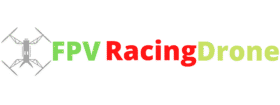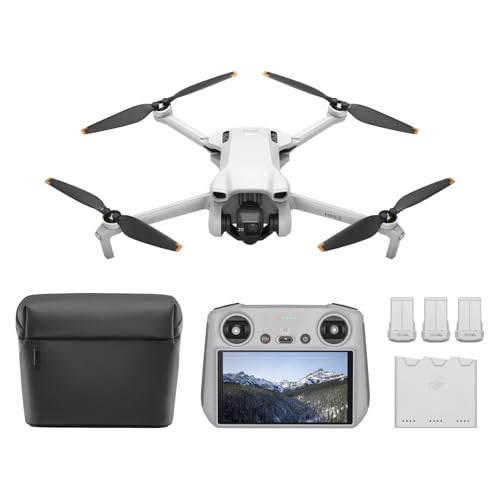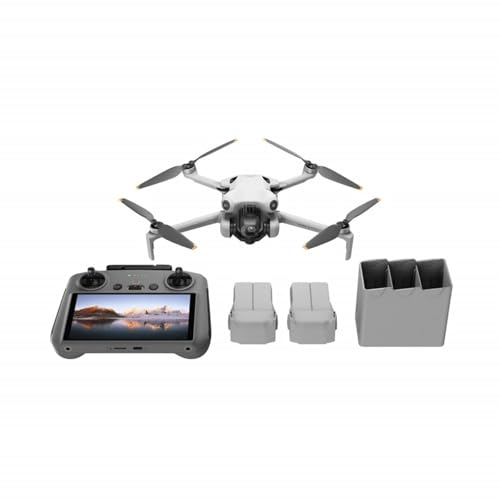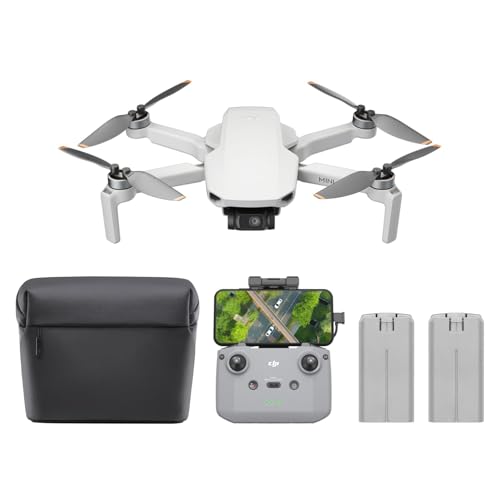In today’s competitive real estate market, standing out from the crowd is crucial. High-quality aerial photography and video can transform a property listing, offering potential buyers a breathtaking perspective that traditional photos simply can’t capture. From sprawling estates to urban developments, drones provide a bird’s-eye view, showcasing the property’s layout, its surrounding environment, and unique architectural details. But with so many options out there, choosing the best drone for real estate can feel like a daunting task.
Don’t sweat it! We’ve done the legwork for you. We’ve scouted the market to bring you a hand-picked selection of top-tier drones that are perfect for elevating your property marketing. Whether you’re a seasoned real estate agent, a professional photographer, or just starting out, we’ve got a drone on this list that’s just right for your needs. Let’s dive in and find your next aerial powerhouse!
1. DJI Mini 3 Fly More Combo (DJI RC)

The DJI Mini 3 Fly More Combo truly packs a punch for its size and affordability, making it an excellent contender for the best drone for real estate if you prioritize portability and ease of compliance. Weighing under 249g, it sidesteps FAA registration requirements for recreational use, which is a massive plus for agents who want to get up and flying without extra red tape. But don’t let its small stature fool you; it captures stunning 4K HDR video and boasts impressive flight stability, perfect for showcasing properties with crystal-clear aerial shots.
-
Key Features:
- No FAA Registration or Remote ID required (under 249g for recreational use).
- 4K UHD HDR Video with Dual Native ISO Fusion for excellent detail day and night.
- True Vertical Shooting for social media-ready videos of tall structures.
- Extended Battery Life (up to 51 mins with Intelligent Flight Battery Plus, sold separately; 114 mins total with Fly More Combo).
- Level 5 Wind Resistance and 3-Axis Gimbal for stable 4K imagery.
- 10km Max HD Video Transmission for clear, long-range views.
- Creative QuickShots and Panorama features.
- Beginner-friendly with GPS Return to Home (RTH), Precise Hovering, Auto Takeoff/Landing.
- QuickTransfer via Wi-Fi for fast downloads.
- Includes DJI RC with built-in 5.5-inch HD display, extra batteries, charging hub, and shoulder bag.
-
Pros:
- Extremely lightweight and portable, ideal for on-the-go shoots.
- No FAA registration needed for recreational use, simplifying operations.
- Excellent 4K HDR camera quality for its class.
- Long flight time with the Fly More Combo is great for multiple takes or large properties.
- DJI RC controller provides a seamless, phone-free flying experience.
- True Vertical Shooting is perfect for modern social media marketing.
-
Cons:
- Intelligent Flight Battery Plus makes it exceed 249g, requiring registration for commercial use.
- Lacks obstacle avoidance sensors found in higher-end models.
- Wind resistance, while good, might still be challenged by very strong gusts.
-
User Impressions: Users love the Mini 3’s combination of portability, impressive camera quality, and long battery life. The DJI RC controller is a particular highlight, making the flying experience super convenient. Many beginners praise its ease of use, while experienced pilots appreciate its robust features for its size, especially for quick and compliant real estate fly-throughs.
2. Bwine F7GB2 Pro Drones with Camera for Adults 4K UHD

The Bwine F7GB2 Pro stands out for its robust feature set, particularly its FAA Remote ID compliance right out of the box and an extraordinary total flight time, making it a strong contender for the best drone for real estate if you need extended air time and professional-grade stability. Its 4K camera with a 3-axis gimbal ensures super smooth and detailed aerial video footage, essential for captivating property tours. This drone is built to handle various conditions, providing peace of mind for expansive properties or challenging weather days.
-
Key Features:
- FAA Remote ID certified and compliant, ready to fly.
- One-click detachable 4K camera with 3-axis gimbal, 120° FOV lens, and larger COMS sensor.
- 75 minutes total flight time with 3x2600mAh intelligent batteries.
- 2000m altitude capability and L6 wind resistance for stable flight in challenging conditions.
- Built-in 1806 brushless motor, Compass, Gyroscope, Barometer.
- GPS with features like Return to Home (low battery, signal loss, one-key), Follow Me, Waypoint Flight, Point of Interest.
- Advanced App settings for FPV sharing (Facebook, Twitter, TikTok, etc.) and photo/video retouching.
- Includes carrying case, transmitter, extra propellers, and a 2-year warranty.
-
Pros:
- Exceptional 75-minute total flight time, minimizing interruptions during shoots.
- FAA Remote ID certification provides immediate compliance.
- Excellent 4K camera with 3-axis gimbal ensures cinematic stability and high-quality images.
- Strong wind resistance and high altitude capability allow for versatile shooting locations.
- Smart GPS features offer safety and advanced creative options.
- Dedicated app for easy sharing and basic editing.
-
Cons:
- Larger size might be less discreet than mini drones.
- Learning curve for advanced app features might exist for beginners.
- Specific fast charger needs to be purchased separately for optimal charging speed.
-
User Impressions: Users are incredibly impressed by the F7GB2 Pro’s long flight duration, often citing it as a game-changer for larger projects. The stable 4K video quality is consistently praised, as is the peace of mind offered by its FAA compliance. Many find it a robust and reliable drone for outdoor aerial photography, even in windy conditions.
3. Drone with Camera for Adults – 2K HD Camera FPV

This compact and user-friendly drone is a fantastic choice for those seeking an entry point into real estate aerials without breaking the bank or navigating complex regulations. Its “FAA-Friendly” under 250g design means no registration required, making it incredibly appealing for new pilots or quick, spontaneous property showings. While offering 2K HD footage rather than 4K, its shock-absorbing technology and brushless motors ensure smooth, stable video, delivering respectable quality for listings and virtual tours.
-
Key Features:
- Portable & FAA-Friendly Design: Under 250g, no FAA registration or Remote ID required.
- 2K HD Camera with 5GHz FPV transmission, 110° wide-angle, and 90° adjustable camera.
- Built-in shock-absorbing technology for stable aerial video.
- Brushless Motors for higher efficiency, longer lifespan, lower noise, and better wind resistance.
- Altitude Hold System for stable hovering.
- Smart Safety features: Overcurrent protection, Emergency Stop, Low Battery/Signal Loss Auto-Return.
- GPS mode (outdoor) for tracking and finding the drone.
- Multiple Flight Modes: 2 speed settings, custom flight paths, circle flight, Headless Mode, one-key takeoff.
- Gesture control for selfie shooting.
- Includes two batteries for extended flight time (up to 24-28 minutes total).
-
Pros:
- Extremely lightweight and portable; no FAA registration needed is a huge convenience.
- Brushless motors provide enhanced stability and durability.
- Shock-absorbing technology helps maintain smooth video.
- Plenty of safety features make it forgiving for beginners.
- Affordable entry point into aerial photography.
- Gesture control is fun for quick property selfies or lifestyle shots.
-
Cons:
- 2K camera resolution is good but not true 4K like higher-end models.
- Flight time per battery is moderate compared to some competitors.
- May require more practice for precise control in outdoor, windy conditions.
-
User Impressions: Beginners particularly appreciate this drone for its ease of use and the fact that it doesn’t require FAA registration. Customers highlight its stable flight performance thanks to the brushless motors and the decent video quality for its price point. It’s often recommended as a great starter drone for those looking to explore real estate aerials.
4. 36%CODE Bingchat Upgraded Professional Drones with Camera

The Bingchat Upgraded Professional Drone is truly pushing boundaries with its innovative features, especially the touch screen controller that doubles as an Android tablet and its unique payload release function. If you’re a real estate professional looking for cutting-edge technology and enhanced safety features like 360° laser obstacle avoidance, this drone definitely earns its spot as a strong contender for the best drone for real estate. Its real 4K HD camera with a 3-axis gimbal and EIS ensures cinematic stability and stunning image quality for showcasing properties in the best light.
-
Key Features:
- 2025 New Upgraded Tablet: Touch Screen Controller with Android system, Google Play support, and WLAN (can function as a tablet).
- Payload Release Function and 360° Laser Obstacle Avoidance for enhanced safety and versatility.
- Real 4K HD Camera with 3-Axis Gimbal & EIS Anti Shake, 130° FOV lens, larger COMS sensor, and 50x digital zoom.
- 84 Mins Flight Time with two 11.1V 8000Mah Batteries (42 mins per battery without OAS).
- 5 Miles Long Range & 2624 FT Height for extensive coverage.
- FAA Certified Compliant.
- Special Funny & Safe Functions: Rainproof, Night Vision, Time-lapse shooting, Level 7 Wind Resistance, Low Battery alarm and Auto-return, Find the drone, Follow Me/Car, 360° Surround shooting, Waypoint flight, Gesture for videos/pictures, LED detection lights.
- Excellent after-sale service with free replacements and support.
-
Pros:
- Revolutionary touch screen controller offers a tablet-like experience for control and entertainment.
- Payload release is a unique feature for creative marketing or specific tasks.
- Comprehensive 360° laser obstacle avoidance significantly enhances flight safety.
- Impressive 84 minutes total flight time, allowing for extensive property surveys.
- High-quality 4K camera with 3-axis gimbal and EIS provides superior stabilization.
- FAA certified, ensuring compliance for commercial operations.
- Robust build with Level 7 wind resistance and rainproof capabilities.
-
Cons:
- Likely a heavier and larger drone, potentially less portable than mini options.
- The advanced controller might have a steeper learning curve for some users.
- “36%CODE Bingchat” in the title is unusual and might cause confusion.
-
User Impressions: Early adopters are highly enthusiastic about the innovative touch screen controller, praising its versatility. The 360° obstacle avoidance instills great confidence during flights, and the extended battery life is frequently highlighted as a major advantage for professional tasks. Users value the commitment to after-sale service and the drone’s robust performance.
5. DJI Flip With RC 2 Screen Remote Controller, Follow Me

The DJI Flip, likely a variation of a popular DJI mini-series drone, emerges as an appealing option for real estate professionals who prioritize safety, portability, and excellent camera performance in a compact package. What truly sets this drone apart for real estate is its full-coverage propeller guards made from lightweight carbon fiber, offering comprehensive protection – a fantastic feature for flying around properties, especially indoors or near structures, without fear of damage. Its smart “Follow Me” function adds a dynamic edge to showcasing lifestyle aspects around a home.
-
Key Features:
- Fly Fearlessly: Full-coverage propeller guards made from lightweight carbon fiber.
- Lightweight and Regulation Friendly: Under 249g, no FAA registration or Remote ID needed in America.
- Your On-the-Go Director: Subject tracking (“Follow Me”) keeps your subject in focus.
- Capture Every Detail with 1/1.3-inch CMOS sensor, capturing more light for clearer images.
- Stunning 4K/60fps HDR Video for ultra-high-definition capture of scenery and portraits.
- RC 2 Screen Remote Controller included for an integrated flying experience.
-
Pros:
- Built-in propeller guards offer superior safety, reducing risk of damage to property or drone.
- Under 249g weight avoids FAA registration, making it easy to deploy.
- High-quality 4K/60fps HDR video from a 1/1.3-inch CMOS sensor provides excellent visual fidelity.
- “Follow Me” mode is useful for dynamic property walk-throughs or lifestyle footage.
- Integrated RC 2 screen remote controller simplifies setup and operation.
- Compact and convenient for travel, fitting into any gear bag.
-
Cons:
- Propeller guards, while protective, can slightly reduce flight efficiency and wind resistance.
- Specific flight time isn’t explicitly listed, but typically mini drones are moderate.
- May lack advanced obstacle avoidance beyond the physical guards.
-
User Impressions: Users highly commend the DJI Flip for its enhanced safety features, especially the carbon fiber propeller guards, which provide confidence when flying close to buildings. The ease of not needing FAA registration is a big hit, and the 4K HDR video quality is consistently praised for such a compact device. The integrated screen remote adds to the seamless user experience.
6. Drone with Camera, Drones for Adults and Beginners, 1080P
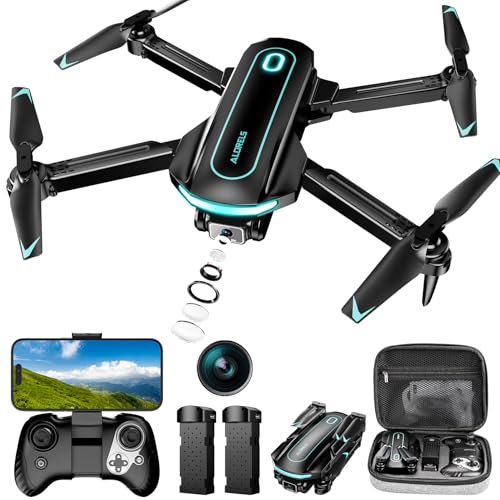
For those just dipping their toes into real estate drone photography or seeking an extremely budget-friendly and user-friendly option, this 1080P FPV drone is a great starting point. It’s especially appealing for beginners with its comprehensive suite of safety features and easy-to-master controls. While it offers 1080P rather than 4K footage, it’s still perfectly capable of capturing engaging aerial perspectives for property listings, particularly for online viewing where file size might be a consideration.
-
Key Features:
- FPV Drone with 1080P Camera: Tiltable via app, remote, or manual control; optical flow positioning for stable hover.
- Extended Flight Time: Two rechargeable batteries providing up to 24–28 minutes total flight.
- Beginner-Friendly: Over-current protection, emergency stop, trajectory flight, gravity control, 3D flip, headless mode, 3-speed mode, one-key takeoff/landing, gesture photo.
- Foldable mini drone design, great for portability.
- Remote & App Control: Connect via WiFi for app features like trajectory flight.
- Helpful Tips: Gyroscope calibration guidance included.
-
Pros:
- Very accessible price point for beginners.
- Extensive beginner-friendly features make it easy to learn and fly.
- Optical flow positioning assists with stable hovering, crucial for property shots.
- Foldable design enhances portability.
- Two batteries provide decent total flight time for its class.
- Good for practice before investing in a higher-end professional drone.
-
Cons:
- 1080P camera is not as high-resolution as 4K options, potentially limiting professional output.
- “Kids drone” in the product title may give the wrong impression for professional real estate use.
- Lacks advanced GPS features for precise navigation and safety returns (only general auto-return).
- Wind resistance might be limited compared to models with brushless motors.
-
User Impressions: New drone pilots consistently praise this drone for its intuitive controls and robust safety features, making it an ideal “first drone.” Users find the 1080P camera sufficient for casual video and photo capture, and the extended flight time with two batteries is a significant plus. It’s highly recommended for those who want to experiment with aerial photography without a major investment.
7. GPS Drone with Camera 4.5″ LCD Screen Remote Control, FPV

This GPS drone offers a compelling package for real estate professionals who value a dedicated viewing screen and reliable GPS precision. The integrated 4.5-inch HD LCD screen on the remote control is a significant convenience, allowing real-time transmission and instant footage preview without needing a separate phone or tablet. Coupled with its advanced GPS navigation and an HD camera, this drone simplifies the process of capturing and securing aerial property footage, making it a robust option for seamless property mapping and showcasing.
-
Key Features:
- Remote Control with 4.5 Inch HD LCD Screen for real-time FPV transmission and preview.
- GPS Drone with HD Camera for Adults: Captures clear aerial footage with professional color accuracy.
- SD Card Storage: Saves photos/videos directly to the SD card with one-touch operation.
- Precision GPS Navigation: Rock-solid positioning and automatic return functions (low battery, signal loss).
- Extended Operation Range: 250m mapping capability and 400m control distance.
- Wind Resistant for adults, ensuring stable flight.
-
Pros:
- Dedicated LCD screen on the remote enhances convenience and visibility, no phone needed.
- Reliable GPS navigation ensures stable flight, precise positioning, and safe returns.
- Direct SD card storage simplifies data management for property photos and videos.
- Decent operational range for surveying larger properties.
- “Wind resistant” feature suggests better stability than basic models.
- User-friendly for all skill levels, from beginners to professional photographers.
-
Cons:
- Camera is specified as “HD” but not explicitly 4K, which might be a drawback for high-end listings.
- Control distance and mapping capability are good but not as extensive as some professional-grade drones.
- Specific flight time is not listed.
-
User Impressions: Customers frequently praise the integrated LCD screen on the remote, finding it a major convenience for real-time viewing and eliminating phone compatibility issues. The GPS precision and auto-return functions instill confidence, especially for flying over unfamiliar property layouts. Users appreciate the direct-to-SD card recording, streamlining their workflow for real estate content creation.
Buyer’s Guide: What to Look for in the Best Drone for Real Estate
When choosing the best drone for real estate, several key factors should influence your decision. Think about what truly matters for showcasing properties effectively and efficiently:
- Camera Quality: This is paramount. Look for drones with at least a 2K camera, but 4K or even 5.4K resolution with good dynamic range and a large sensor (like 1/1.3-inch CMOS) will give you crisp, detailed images and videos. A 3-axis gimbal is non-negotiable for smooth, cinematic footage.
- Flight Time & Batteries: Longer flight times mean less downtime for battery swaps. Aim for at least 20-30 minutes per battery, and ideally, look for bundles with multiple batteries. This is crucial for capturing all angles of a property without rushing.
- Stability & Wind Resistance: Real estate shoots often happen outdoors, where wind can be a factor. Drones with good wind resistance (Level 5+) and robust stabilization (3-axis gimbal, brushless motors) will ensure your footage remains steady and professional.
- Ease of Use & Intelligent Flight Modes: For real estate, features like GPS positioning, Return to Home (RTH), Follow Me, Waypoint Flight, and Point of Interest can greatly simplify complex shots and enhance safety. Beginner-friendly controls are a huge plus for new pilots.
- Regulatory Compliance (FAA & Remote ID): Understand the regulations in your area. Drones under 250g often have fewer restrictions for recreational use (no FAA registration). For commercial real estate work, you’ll likely need a Part 107 license and a drone that is Remote ID compliant.
- Portability: Real estate agents are often on the go. A foldable, lightweight drone that’s easy to transport to different property locations is a significant advantage.
- Obstacle Avoidance: This feature can save your drone (and the property) from costly accidents, especially when flying near trees, power lines, or buildings.
FAQ: Your Top Questions About Real Estate Drones Answered
Q1: Do I need a special license to fly a drone for commercial real estate photography?
A1: Yes, in the United States, if you’re flying a drone for any commercial purpose, including real estate photography, you generally need to obtain a Part 107 Remote Pilot Certificate from the FAA. This involves passing a knowledge test. Always check your local aviation authority’s regulations.
Q2: What camera resolution is ideal for real estate drone photos and videos?
A2: For professional-quality real estate visuals, a 4K camera is generally recommended. It provides superior detail and allows for more flexibility in post-production, like cropping or zooming without significant loss of quality. Some high-end drones even offer 5.4K or 6K.
Q3: How much flight time should I look for in a real estate drone?
A3: A minimum of 20-30 minutes of flight time per battery is a good starting point. However, more is always better, especially for larger properties or if you plan multiple takes. Many drones offer “Fly More Combos” that include additional batteries, extending your total air time considerably.
Q4: Are “mini drones” suitable for real estate photography?
A4: Absolutely! Mini drones (under 250g) like the DJI Mini series are increasingly popular for real estate. Their main advantage is often not requiring FAA registration for recreational use, making them quick and easy to deploy. While their sensors might be slightly smaller than professional-grade drones, many now offer excellent 4K video quality suitable for most listings.
Q5: What is Remote ID, and how does it affect real estate drone pilots?
A5: Remote ID is a system for drones in the US that broadcasts identification and location information from the drone while it’s in flight. As of September 16, 2023, most drones operating in US airspace must comply with Remote ID regulations. If you’re flying for commercial purposes, your drone must be Remote ID compliant, or you’ll need to operate it within an FAA-Recognized Identification Area (FRIA). Always ensure your chosen drone is compliant or plan accordingly.
Q6: What are some essential accessories for real estate drone photography?
A6: Beyond extra batteries, consider a good quality carrying case for safe transport, ND (Neutral Density) filters for better exposure control in bright conditions, a fast SD card for 4K video, and a portable charging hub. A landing pad can also protect your drone during takeoff and landing in varied terrain.
Q7: Can drones help with virtual property tours?
A7: Absolutely! Drone footage is fantastic for creating immersive virtual tours. You can use aerial video to provide an establishing shot of the property and its surroundings, then transition to interior shots. Some drones even have “Waypoint” or “Orbit” modes that can be programmed to capture smooth, consistent footage for virtual tour overlays.
Final Thoughts on the Best Drone for Real Estate
Choosing the best drone for real estate is a strategic investment that can significantly enhance your property marketing efforts. From offering unparalleled aerial views to creating dynamic virtual tours, a capable drone is an indispensable tool in today’s digital age. We’ve explored some fantastic options, each with unique strengths, whether you prioritize portability, extended flight time, cutting-edge safety features, or sheer affordability.
Ultimately, the right drone for you will align with your budget, technical skill level, and specific real estate marketing goals. Take your time, consider the features that matter most to your workflow, and get ready to elevate your property listings to new heights!
